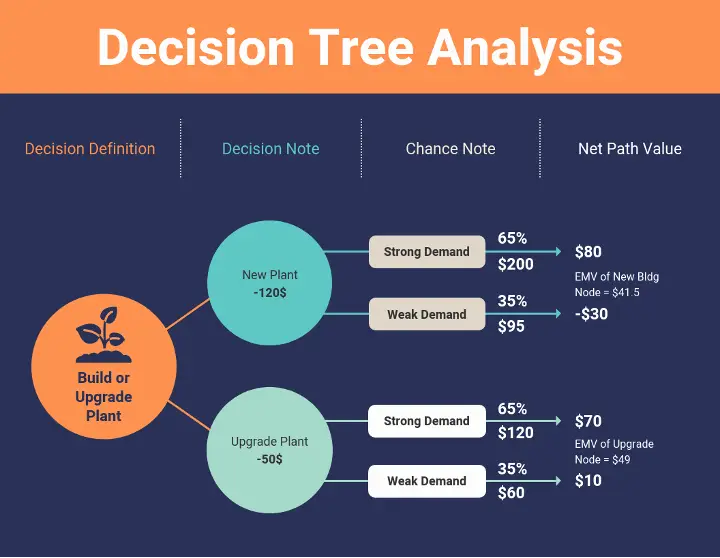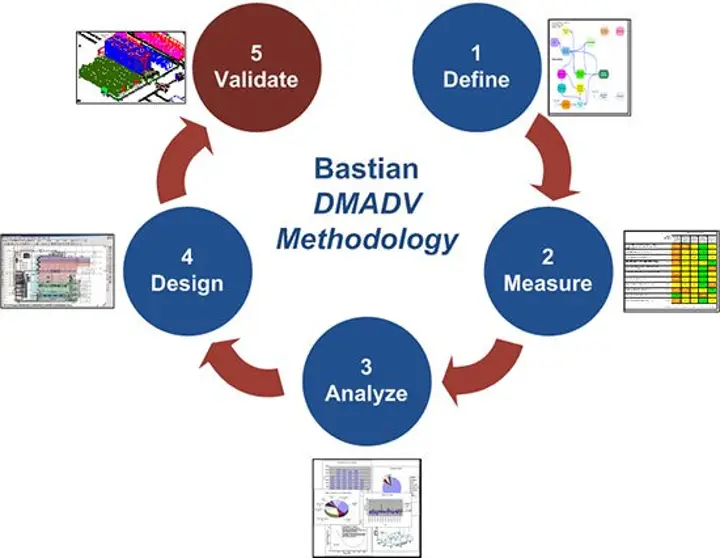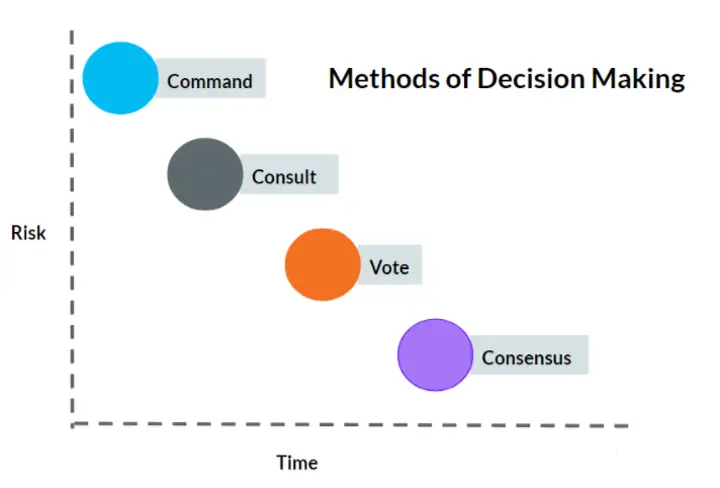As a famous saying goes – “Two heads are always better than one”, Consultation before making every major decision is crucial. It allows you to gather insights from various sources and look at a situation from a separate set of eyes, especially in the corporate world. It’s always recommended that everyone agrees with a decision being made to create a better work environment. The entire consultation process may seem long, but it is worth it because of the benefits it carries.
There are a lot of qualities associated with good decisions, such as thoroughly consulting everyone before finalizing decisions, keeping everybody in the loop while deciding, considering their best interests, and so on.
However, people often get confused about when should they consult others, what should be the line, or even the thought-process to go about it. While it may seem tricky if you’re not accustomed to it or are just entering the corporate world where everybody’s insight matters, it’s actually not that hard.
So today, we will go through the whole process of consult decision making in detail, along with the best practices that you should follow. By the end of this article, you will be well acquainted with the ways through which you can make good and effective decisions.
What is consult decision-making?
What would you do if you came across a problem you did not know how to fix? Indeed,you would consult someone who has faced a similar problem and could give you some advice regarding it. Similarly, a consult decision-making group consists of people who analyze a situation and write a report on it. Then, it’s sent to one or several professional decision-makers responsible for making the final decision.
This may sound like you are making other people do your work for you, but these people only give you a list of the best viable solutions, and in the end, the final decision will always be up to you.
The decision doesn’t need to be made in the presence of a group of people; instead, it can be done one-to-one as well. Often the decision-making group gets together and makes a report, all under the head decision maker’s presence. But sometimes, the group works independently and presents the report to the decision-maker later.
The Purpose Behind Consultative Decision Making

The image above depicts a problem (to build or upgrade a plant) and its workable solutions (to get a new plant or to upgrade it), followed by an estimate of the resources that could be spent on them and the profit or loss it could bring.
As stated above, one of the purposes behind choosing this methodology could be that you may face a problem you have never faced before and need outside help. However, apart from this, there are many other reasons you could need this.
While working in a company, everyone must have a say in all the decisions made; therefore, consulting before making decisions becomes important to ensure fairness.
Yet another reason for choosing this could be that everyone has a different approach to solving a problem, and when you are working in a group, every person comes up with a unique way of tackling the situation at hand. Hence, you may end up with alternate ways of solving a problem. This becomes important when you need to calculate the risk of every solution and choose the best one.
One person does not always have all the information regarding all the different sectors in the company. So, including at least one person from every sector is important because they will help you decide which solution is optimal, keeping in mind the company’s resources.
The Process Behind Making the Final Decision
Let’s go through the process of decision making in a step-to-step fashion.
Step 1:
The primary step in decision-making is identifying the problem at hand and assessing it. Once identified, the most obvious solutions for the problems are listed down.
Step 2:
The second step is to assemble a group of people who will be helping you out to make the decision. Ensure that the people you appoint are appointed based on their merit and not because of their relationship with you. Another important tip is to appoint new people before making every decision, so the decision does not seem biased.
Step 3:
Once you have your consult decision-making group ready, it is time to gather information about the situation and make a report consisting of everyone’s opinions and alternate solutions.
Step 4:
The last step in this process is to communicate and decide on one solution (and an alternate solution just in case). All heads should agree on this decision, and everyone should be informed about it.
What If You Must Decide in Haste?
Sometimes people make decisions in a rush by only considering the benefit they will get from it immediately rather than the consequences they would have to face later. That is why even in situations where it may seem like you do not have time, it is better to give it some thought before making your final decision. Even when there is an actual urgency, there are alternatives for that.
The 4 Methods of Decision-Making
There are four major decision-making styles:
1. Autocratic
2. Consultative
3. Democratic
4. Consensus
The Autocratic Decision Making Style:
When a decision must be made quickly, and it does not have a significant impact on everything else, the head can make that decision on their own based on their own knowledge and experiences. Since these kinds of decisions do not require any prior discussions, they are fast, but as a result, the rest of the group members may feel excluded, and everyone may or may not agree with the decision that was made on their behalf.
The Consultative Decision Making Style:
For this style, the head puts forth a problem and asks the rest of the group for their insights/ideas. The head then makes the final decision, but in this way, the rest of the group members get a chance to share their thoughts on the situation and may believe that they have influenced the final decision. Apart from this, the group’s head is introduced to alternate solutions, resulting in increased collaborative work in the future.
The Democratic Decision Making Style:
When you need to know if your group members agree with the solutions you are presenting, then everyone in the group, including the authoritative member, must vote for the solution they favor. Here everyone’s vote has an equal weightage. As a result, everyone gets to participate equally, but even then, the group whose vote did not win might not act as per the new decision. No decision is finalized if none of the voters take the responsibility to vote.
The Consensus Decision Making Style:
It is sometimes necessary to make sure that every group member is fully committed to the final decision. For this purpose, time is spent to ensure that everyone is on board. This way, everyone in the team feels like their opinion is valued and has an equal share in the decision’s success or failure. This style is only preferred when you have ample time and when the entire team’s commitment is essential.
Before making any weighty decision, the leader must inform the rest of the team beforehand about their role in making the decision. This is important because once the decision is made, the team members are fully aware and do not resent or miss it.

This image illustrates the DMADV (Definition, Measurement, Analysis, Design, and Validation) approach toward consult decision making.
How To Decide What Decision Making Style Is Best for You?
Choosing a decision-making style may seem like a hassle sometimes, but if you consider asking yourself these four questions before selecting, it might become easier for you to choose.
- Who must make the decision?
- Do you have all the resources that you need?
- Is consensus important for this decision?
- How big of an impact will it have?
Who must make the decision?
Is it you who must make the decision on your own? Do you have the authority to make the decision all by yourself? You must confirm if you can take all the authority here or not. In case you must appoint a team or work as a team, you must make sure that everyone on the team is present.
Do you have all the resources that you need?
You need to keep in mind all the resources that you can avail yourself of, and you need to be aware of your limits to make a smart choice. If you yourself possess all the required information, you may make the decision by yourself; otherwise, it is essential to include the person(s) who can guide you regarding them.
Is consensus important for this decision?
Sometimes you may decide on your own to save some time, but you then must face the consequences too if it all fails. If you believe that the other members of your team might get affected as a result of your decision, then you must include everyone, and they all must agree before you make the final decision.
How big of an impact will it have?
While making minor decisions may not be compulsory for the head to include everyone in the decision-making process since that would only consume everyone’s time. Therefore, the situation’s complexity determines the number of people who should be involved in the process.
What are the benefits of this methodology?
The infographic above efficiently conveys how deciding after proper consultation reduces the risks of your decision going downhill.

While I hope your mind would already be filled with a lot of benefits associated with consult decision-making, let’s go through some concrete benefits you’re guaranteed to enjoy with this methodology:
- Develop a unique perspective of how you can deal with the situation
- Become more tolerable towards other people’s opinions
- Push yourself to put your ego aside when you are obliged to agree with someone else’s opinion
- Use this as a chance to introduce your ideas to the group
- Become more aware of your surroundings by gathering added information
Risks Of Choosing This Methodology
Considering how there are risks associated with everything, consult decision-making is not perfect as well. Let’s discuss some of the risks that follow this particular methodology.
- When the leaders keep making decisions on their own, the rest of the team members may feel inferior and resentful.
- When you do not have enough time, the consultation can result in confusion, and you may make decisions in haste.
- If you appoint the same group of people to make decisions all the time, it may appear to the rest of the team that the decisions being made are biased.
- Most of the time, misinformation may spread regarding the decisions or because of the misinterpretation of someone’s opinion.
- At times, the outcomes of the decision made by the team whose vote one may not be favorable. This, in return, harms their morale.
Wrapping Up – Does Consultation Improve Decision Making?

One can never run an entire company on one’s own; that is why consultation is essential, especially when making big decisions. It’s vital that all your team members feel respected and included during the decision-making of all critical matters. Some people hesitate to include others before taking a big step because they believe it might create confusion and know better, but that is not true.
Even if you make decisions in a group, it has a substantial impact on your personal decision-making skills as well. You can also use the tactics you learned personally while making everyday life choices. That’s it for today; I hope the article was informative and interesting. Happy decision-making!

